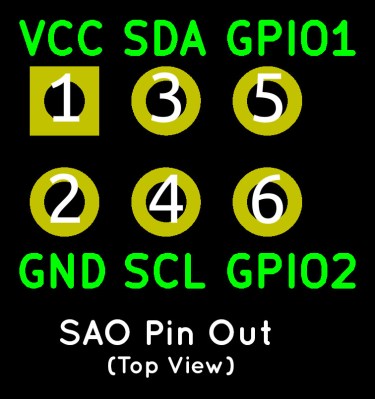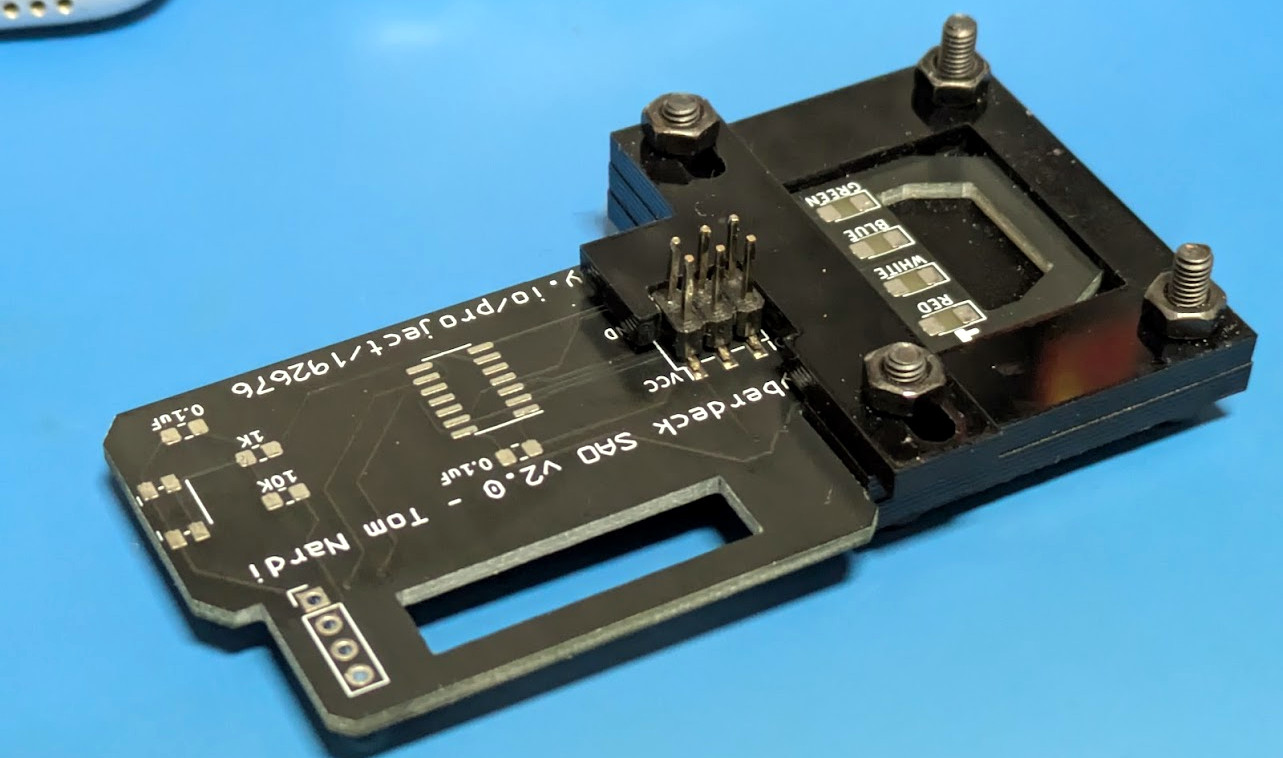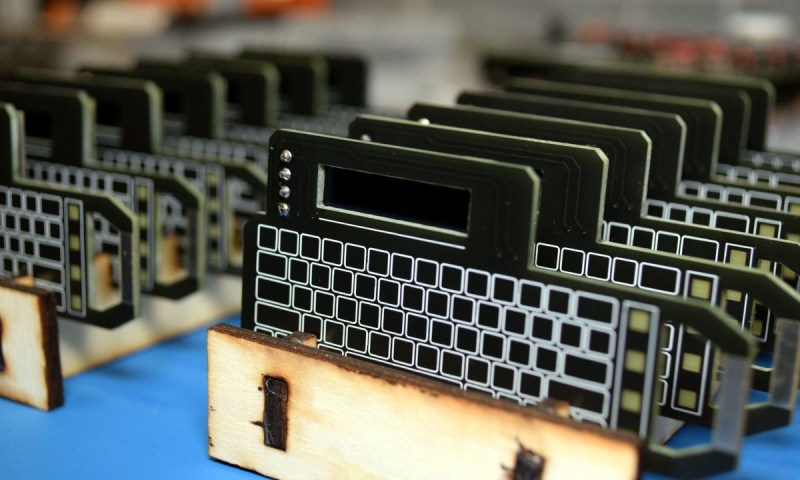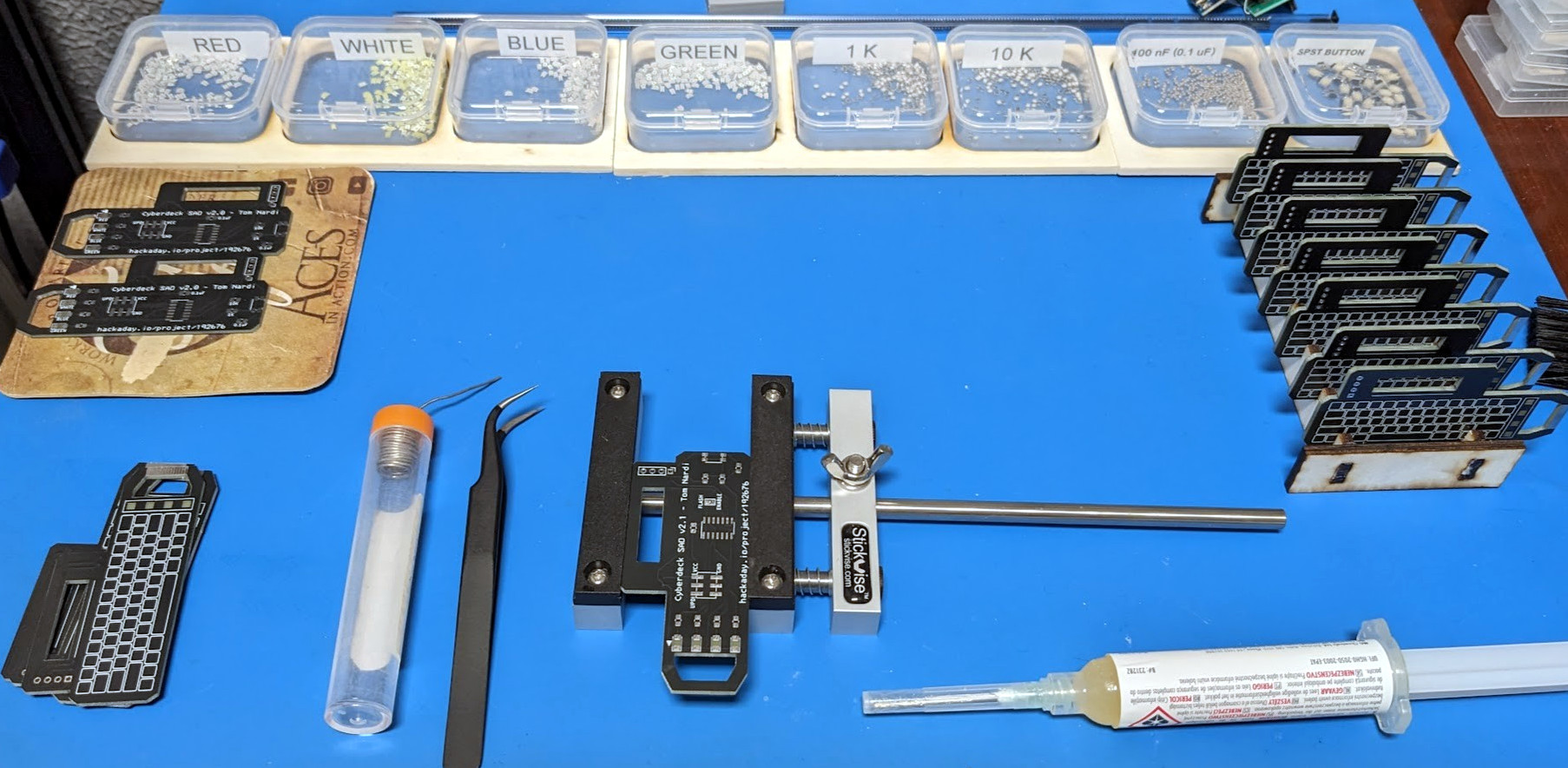There are a lot of fantastic things about Hackaday Supercon, but for me personally, the highlight is always seeing the dizzying array of electronic bits and bobs that folks bring with them. If you’ve never had the chance to join us in Pasadena, it’s a bit like a hardware show-and-tell, where half the people you meet are eager to pull some homemade gadget out of their bag for an impromptu demonstration. But what’s really cool is that they’ve often made enough of said device that they can hand them out to anyone who’s interested. Put simply, it’s very easy to leave Supercon with a whole lot more stuff than when you came in with.
Most people would look at this as a benefit of attending, which of course it is. But in a way, the experience bummed me out for the first couple of years. Sure, I got to take home a literal sack of incredible hardware created by members of our community, and I’ve cherished each piece. But I never had anything to give them in return, and that didn’t quite sit right with me.
So last year I decided to be a bit more proactive and make my own Simple Add-On (SAO) in time for Supercon 2023. With a stack of these in my bag, I’d have a personalized piece of hardware to hand out that attendees could plug right into their badge and enjoy. From previous years I also knew there was something of an underground SAO market at Supercon, and that I’d find plenty of people who would be happy to swap one for their own add-ons for mine.
To say that designing, building, and distributing my first SAO was a rewarding experience would be something of an understatement. It made such an impression on me that it ended up helping to guide our brainstorming sessions for what would become the 2024 Supercon badge and the ongoing SAO Contest. Put simply, making an SAO and swapping it with other attendees adds an exciting new element to a hacker con, and you should absolutely do it.
So while you’ve still got time to get PCBs ordered, let’s take a look at some of the unique aspects of creating your own Simple Add-On.
Low Barrier to Entry
To start with, let’s cover what’s probably the biggest benefit of making an SAO versus pretty much any other kind of electronic device: essentially all the hard work has been done for you, so you’re free to explore and get creative.
 Consider the SAO standard, such as it is. You know there’s going to be 3.3 volts, you know physically how your device will interface with the host badge, and should you decide to utilize it, there’s an incredibly common and well-supported protocol (I2C) in place for communication with other devices.
Consider the SAO standard, such as it is. You know there’s going to be 3.3 volts, you know physically how your device will interface with the host badge, and should you decide to utilize it, there’s an incredibly common and well-supported protocol (I2C) in place for communication with other devices.
There’s even a pair of GPIO pins thrown in for good measure, which more nuanced versions of the SAO spec explain can be used as the clock and data pins for addressable LEDs. In either event, they provide an even easier way to get your SAO talking to whatever it’s plugged into than I2C if that’s what you’re after.
Not having to worry about power is a huge weight off your shoulders. Voltage regulation — whether it’s boosting the output from a battery, or knocking down a higher voltage to something that won’t fry your components — can be tricky, and has been known to trip up even experienced hardware hackers. There’s admittedly some ambiguity about how much current an SAO can draw, but unless you’re looking to push the envelope, it’s unlikely anything that fits in such a small footprint could pull enough juice to actually become a problem.
Minimal Investment
Another thing to consider is the cost. While getting PCBs made today is cheaper than ever, the cost still goes up with surface area. Especially for new players, the cost of ordering larger boards can trigger some anxiety. Luckily, the traditional SAO is so small that having 20, 30, or even 50 of them made won’t hit you too hard in the wallet. Just as an example, having 30 copies of the PCB for my first SAO fabricated overseas cost me around $12 (shipping is the expensive part).
 In fact, an SAO is usually small enough that a quick-turn prototype run with one of the domestic board houses might be within your budget. I’ve been playing around with a new SAO design, and both DigiKey and OSH Park quoted me around $40 to have a handful of boards produced and at my doorstep within 5 to 7 days.
In fact, an SAO is usually small enough that a quick-turn prototype run with one of the domestic board houses might be within your budget. I’ve been playing around with a new SAO design, and both DigiKey and OSH Park quoted me around $40 to have a handful of boards produced and at my doorstep within 5 to 7 days.
Now assembly of your SAOs, should you outsource that, can still be expensive. Even though they’re small, it’s all going to come down to what kind of parts you’re using in the design. I was recently talking to Al Williams around the Hackaday Virtual Water Cooler, and he mentioned the cost to have just a handful of his SAO made was in the three figures. Then you look at the parts he used in the design, and it was clear this was never going to be a cheap build.
But even if you’ve got deep enough pockets to pay for it, I’d personally recommend against professional assembly in most cases. Which leads nicely into my next point…
A Taste of Mass Production
Being hobbyists, the reality is that most of us never get the opportunity to build more than a few copies of the same thing. For a personal project, there’s rarely the need to build more than one — and even if you count the early prototypes or failed attempts, it’s unlikely you’d hit the double digits.
But for an SAO, the more the merrier. If you’re planning on swapping with others or giving them away, you’ll obviously want quite a few of them. There’s no “right” number here, but for an event the size of Supercon, having 50 copies of your SAO on-hand would be reasonable. As mentioned earlier, I went with 30 (in part due to the per-unit cost) and in the end felt I should have bumped it up a bit more.
But even at 30, it was far and away the largest run of any single thing I’d ever done. After assembling the third or fourth one, I started to pick up on tricks that would speed up the subsequent builds. Where applicable, hand-soldering quickly gave way to reflowing. After some initial struggling, I realized taking the time to make a jig to hold the more fiddly bits would end up saving me time in the long run. Once ten or so were in various states of completion, it became clear I needed some way to safely hold them while in production, so I ended up cutting a couple board holders out of wood on the laser cutter.

Looking back, this part of the process was perhaps what I enjoyed the most. As you might expect, I’ve been involved with badge production at significant scales in the past. If you have a Supercon badge from the last several years, there’s an excellent chance I personally handled it in some way before you received it. But this was an opportunity to do everything myself, to solve problems and learn some valuable lessons.
Finding a New Community
Finally, the most unique part of making your own SAO is that it’s a ticket to a whole new subculture of hardware hacking.

There are some incredibly talented people making badges and add-ons for the various hacker cons throughout the year, and there’s nothing they like better than swapping their wares and comparing notes. These folks are often pushing the very limits on what the individual hacker and maker is capable of, and can be a wealth of valuable information on every aspect of custom hardware design and production.
When you put your creation up on the SAO Wall at Supercon, or exchange SAOs with somebody, you’re officially part of the club, and entitled to all the honors and benefits occurring thereto. Don’t be surprised if you soon find yourself on a private channel in an invite-only chat server, pitching ideas for what your next project might be.
With a little over a month to go before the 2024 Hackaday Supercon kicks off in Pasadena, and a couple weeks before the deadline on submissions for the Supercon Add-On Contest, there’s still time to throw your six-pin hat into the ring. We can’t wait to see what you come up with.

















Now to move SuperCon to a central USA location, with affordable hotels and parking!
/s
This
Parking? Why not somewhere with usable public transport?
Supercon happens very close to Del Mar Station on the Golden Line, was actually quite usable when I was there. Greetings from Berlin
“When you put your creation up on the SAO Wall at Supercon, or exchange SAOs with somebody, you’re officially part of the club, and entitled to all the honors and benefits occurring thereto.”
“BE SURE TO DRINK YOUR OVALTINE”
B^)
Surface mounting a header, why did you put yourself through that?
The rule I’ve always stuck to is to SMD everything except where it might endure mechanical stresses (headers, wire to board connectors, buttons,switches). I know in a really large scale manufacuring scenario SMDing a header might save a whole process (if the header would otherwise be the one thing that meant the board had to go through a through hole soldering step), but at your scale, and even a larger scale if you want to ensure physically resilient devices, there’s no reason not to just through-hole it.
Because having 6 pins poking through the front of the keyboard would have looked like crap.
I can think of several trivial reasons just off the top of my head, and at least one of them seems fairly probable: PCB features on the other face of the PCB.
SAO = Shitty Add-On and it always has. https://hackaday.com/tag/shitty-add-on/
You’re going to complain about this on every single SAO post, aren’t you? What a way to waste your time and everyone elses.
It’s shitty.
Well, he’s not wrong…
I love how that tag has nothing on it, just completely shows you up.
Quick tip: don’t go trying to win an argument by pointing to a resource that the other side has control over.
That you, Brian? 🙄
LOL!!! Still got some Benchoff Bux saved for the post apocalypse :D
I’m very grateful to have been the recipient of one of Tom’s Cyberdeck SAOs. It inspired me to make my own for this year’s Supercon. I’m rapidly closing in on having the final hardware in my hand. I’ve oscillated a bit on having them manufactured for me or just building them myself.
One of the interesting things that happens is you discover a whole other set of tools of some app you’ve been using – I’m a KiCad user and up until now I’ve really only been generating output for PCBs. When you’re prepping for manufacturing, you find yourself setting values, and ticking boxes you never looked at before.
I haven’t pulled the trigger on that though. There is something very appealing about building it all yourself.
Like Tom, my main motivation for my first PCB/SAO is to have something to share and trade at Supercon this year. I too was inspired the last 2 years by this concept. This has pushed me to learn a new tool/skill in the process and unlock the mystical world of PCB production. I’m probably on the bottom end of the experience/knowledge of electronics at Supercon. This is the best community you can join to learn, be inspired and get support. I’m still trying to figure out how many SAOs to bring.
I want to put my vote in for a central USA location too! I’d love to attend one of these :-)
That pin header jig looks interesting. Does the hook part move freely, so that you can slide the board in, put the pin header and hook in place, solder, then slide the hook and remove the board?
Yes, the arm that hooks around the header has elongated holes. There’s just enough clearance to move it to the side so I can swap in a new board after soldering without having to take it all apart.
What are you using for the light up “display” above the “keyboard”?
Judging by the shape, the 4 pins on the side and the i2c protocol available, I’d say a 128×32 OLED.